Triple Butter Soap Recipe
A super hard and long-lasting cold process soap that's still gentle on your skin. You'll love the blend of shea butter, cocoa butter, and mango butter.
Equipment
- safety equipment (goggles, gloves, mask)
Ingredients
- 4.07 ounces lye
- 10 ounces water
- 4 ounces cocoa butter
- 4 ounces shea butter
- 4 ounces mango butter
- 8 ounces coconut oil
- 9 ounces olive oil
- fragrance of your choice
- 1-2 teaspoons sodium lactate (optional, will make bar very hard)
Instructions
- Make lye water, set aside. Measure out the lye and the water in separate, non-reactive containers, using a digital scale. Combine the lye and the water and stir until dissolved. The lye solution will heat up as the result of a chemical reaction. Be careful of fumes, heat, and the corrosive solution. Set the cup aside to cool in a very safe place.
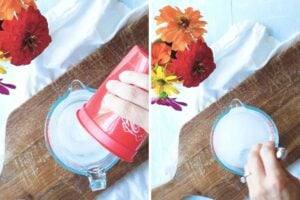
- Melt butters and oil, set aside. Measure out the oils in separate containers and place them in a pot.Melt over medium low heat until fully melted and about 130-140 degrees. Remove from the heat and set aside to cool.
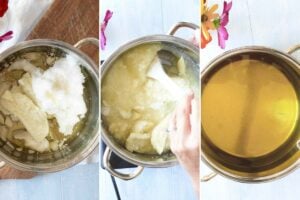
- Check temperatures and prep. Check the temperature of both solutions after an hour or so. Before proceeding, they should be around 90-100 degrees. It is best if they are within ten degrees of each other. Add the sodium lactate, if using, to the cooled lye water. Before blending, have your soap mold, and any fragrance oil or color ready. I recommend mixing the color with a small amount of oils for easy blending. Put on gloves and googles.
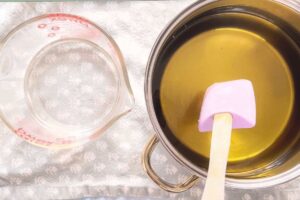
- Blend To Trace. Pour the lye solution into the melted butters + oil and blend with a stick blender until you reach trace. Trace is reached when the soap forms a batter and the stick blender leaves a trail when dragged across the top of the pot. This recipe comes to trace very quickly.
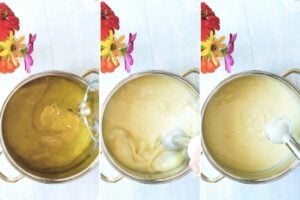
- Add fragrance (optional). Once trace is reached, add any fragrance you are using. Work quickly!
- Fill mold. Pour soap batter into mold, using a spatula. This will harden too quickly for a swirl, but you can make a simple design on top using a spoon if you'd like.
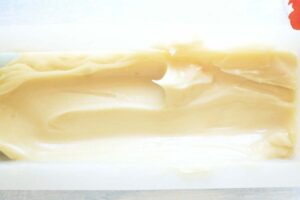
- Cure. Place soap mold in fridge to prevent partial gel, or wrap in blankets and place in turned-off oven to force a full gel. Let cure for overnight to 24 hours, but no longer.
- Cut. Turn out the loaf of soap and slice into bars. Allow to bars to cure in a well-ventilated space for at least 2 weeks before using. This soap will harden quickly, but it will still last longer if you let it cure.
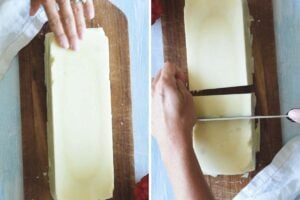
Notes
Be sure to observe all soap safety precautions! Always work in a well-ventilated space, free of distractions. Wear eye protection, gloves, and long sleeves. Lye water and raw soap batter are both extremely corrosive and can be fatal if consumed, cause blindness if splashed in the eyes, and will ruin clothing and kitchen surfaces.
I only recommend the sodium lactate if you are using a cavity mold and want very crisp edges. This recipe is already very hard and it will make it too hard for a loaf mold!
Servings: 12 bars